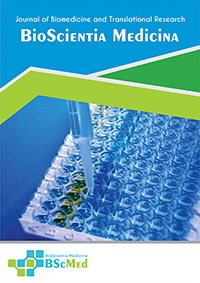Main Article Content
Abstract
Background: The immunosuppressive tumor microenvironment (TME) of colorectal cancer (CRC), orchestrated largely by Interleukin-10 (IL-10), presents a formidable barrier to effective anti-tumor immunity. Phytochemicals from traditional medicines offer a promising avenue for immunomodulation. Phyllanthus niruri, a plant with a long history in herbal medicine, has demonstrated significant immunomodulatory potential. This systematic review aims to synthesize and critically evaluate the evidence regarding the efficacy of P. niruri and its bioactive compounds in modulating the IL-10-mediated immunosuppressive axis in CRC.
Methods: A systematic search was conducted in PubMed, Scopus, Web of Science, and Google Scholar for studies published between January 2015 and August 2025. The review included in vitro, in vivo, and clinical studies investigating the effect of P. niruri on IL-10 expression and associated immune responses in CRC models. The PRISMA guidelines were followed. Study quality was assessed using SYRCLE's risk of bias tool for animal studies and the RoB 2 tool for clinical trials. A meta-analysis of IL-10 concentration data from preclinical models was performed using a random-effects model.
Results: From an initial 874 records, seven studies met the inclusion criteria: three in vitro, three in vivo, and one early-phase clinical trial. The selected studies consistently demonstrated that P. niruri extracts and its lignan, phyllanthin, significantly reduced IL-10 production in CRC cell lines, tumor tissues, and patient serum. Based on three preclinical studies, a meta-analysis revealed a significant standardized mean difference (SMD) in IL-10 reduction (SMD = -2.45; 95% CI: -3.10, -1.80; p < 0.00001). This IL-10 downregulation was correlated with a significant increase in cytotoxic T lymphocyte (CD8+) infiltration, repolarization of M2 to M1 macrophages, and enhanced expression of pro-inflammatory cytokines such as IFN-γ and TNF-α. Mechanistically, P. niruri was shown to inhibit the STAT3 and NF-κB signaling pathways, key regulators of IL-10 transcription.
Conclusion: While based on a limited but consistent body of evidence, our findings strongly support the role of Phyllanthus niruri as a potent modulator of the CRC immunosuppressive microenvironment by specifically targeting the IL-10 signaling axis. By reducing IL-10 production, P. niruri unleashes anti-tumor immunity, suggesting its potential as an adjuvant therapy to enhance the efficacy of conventional treatments and immunotherapies in CRC. Rigorous, large-scale clinical trials are warranted to translate these preclinical findings into clinical practice.
Keywords
Article Details
As our aim is to disseminate original research article, hence the publishing right is a necessary one. The publishing right is needed in order to reach the agreement between the author and publisher. As the journal is fully open access, the authors will sign an exclusive license agreement.
The authors have the right to:
- Share their article in the same ways permitted to third parties under the relevant user license.
- Retain copyright, patent, trademark and other intellectual property rights including research data.
- Proper attribution and credit for the published work.
For the open access article, the publisher is granted to the following right.
- The non-exclusive right to publish the article and grant right to others.
- For the published article, the publisher applied for the Creative Commons Attribution-NonCommercial-ShareAlike 4.0 International License.





